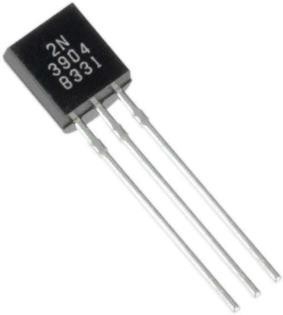BJT
A BJT (Bipolar Junction Transistor) is a type of transistor widely used in electronic circuits for amplification, switching, and signal modulation. It consists of three layers of semiconductor material: the emitter, base, and collector. These layers are arranged in two possible configurations: NPN (Negative-Positive-Negative) and PNP (Positive-Negative-Positive), which determine the direction of current flow and the behavior of the transistor in a circuit. The BJT operates based on the principle of bipolar conduction, where both electrons and holes (charge carriers) contribute to current flow. In an NPN transistor, for instance, the emitter emits electrons into the base, and these electrons are then collected by the collector, forming the current flow.
In a BJT, the base is the central control terminal, and its role is to regulate the flow of charge carriers between the emitter and collector. A small current applied to the base controls a much larger current flowing between the emitter and collector, which is the fundamental principle behind amplification. The collector current (the current flowing from the collector to the emitter) is primarily determined by the base current, and the current gain (denoted as
𝛽
β) defines the ratio of the collector current to the base current. This high current amplification ability makes BJTs essential for amplifying weak signals in audio and RF circuits, as well as in digital logic circuits.
BJTs are classified into two types: NPN and PNP. In an NPN transistor, when a small current flows from the base to the emitter, it allows a larger current to flow from the collector to the emitter. Conversely, in a PNP transistor, a small current flow from the emitter to the base allows a larger current to flow from the emitter to the collector, but in the opposite direction.
The BJT is widely used in applications that require amplification of analog signals, such as in audio amplifiers, radio transmitters, and sensors. It is also commonly used in switching circuits, such as in logic gates, relays, and digital circuits, where it acts as a switch that can turn on or off high-current paths based on the input signal.
However, BJTs have some limitations, such as thermal runaway (where an increase in temperature can cause an increase in current, potentially damaging the device) and larger power consumption compared to other transistor types, like MOSFETs (Metal-Oxide-Semiconductor Field-Effect Transistors). Despite these drawbacks, BJTs remain critical in analog signal processing and are used in applications requiring high current handling and linear amplification.
In a BJT, the base is the central control terminal, and its role is to regulate the flow of charge carriers between the emitter and collector. A small current applied to the base controls a much larger current flowing between the emitter and collector, which is the fundamental principle behind amplification. The collector current (the current flowing from the collector to the emitter) is primarily determined by the base current, and the current gain (denoted as
𝛽
β) defines the ratio of the collector current to the base current. This high current amplification ability makes BJTs essential for amplifying weak signals in audio and RF circuits, as well as in digital logic circuits.
BJTs are classified into two types: NPN and PNP. In an NPN transistor, when a small current flows from the base to the emitter, it allows a larger current to flow from the collector to the emitter. Conversely, in a PNP transistor, a small current flow from the emitter to the base allows a larger current to flow from the emitter to the collector, but in the opposite direction.
The BJT is widely used in applications that require amplification of analog signals, such as in audio amplifiers, radio transmitters, and sensors. It is also commonly used in switching circuits, such as in logic gates, relays, and digital circuits, where it acts as a switch that can turn on or off high-current paths based on the input signal.
However, BJTs have some limitations, such as thermal runaway (where an increase in temperature can cause an increase in current, potentially damaging the device) and larger power consumption compared to other transistor types, like MOSFETs (Metal-Oxide-Semiconductor Field-Effect Transistors). Despite these drawbacks, BJTs remain critical in analog signal processing and are used in applications requiring high current handling and linear amplification.
